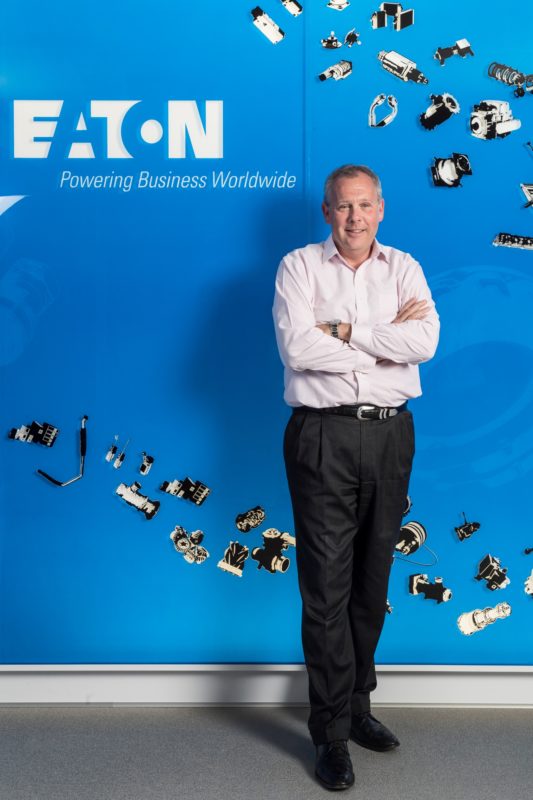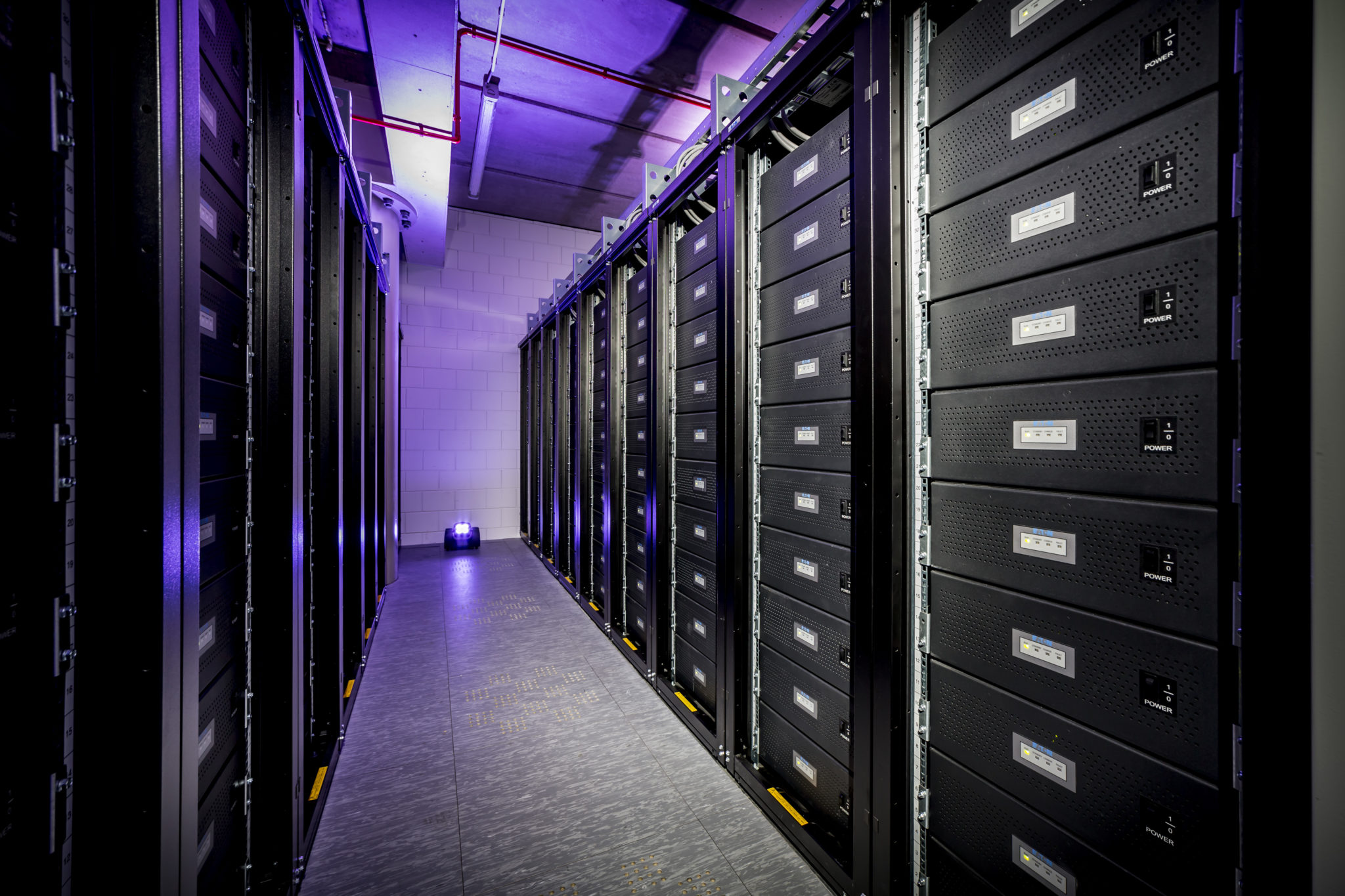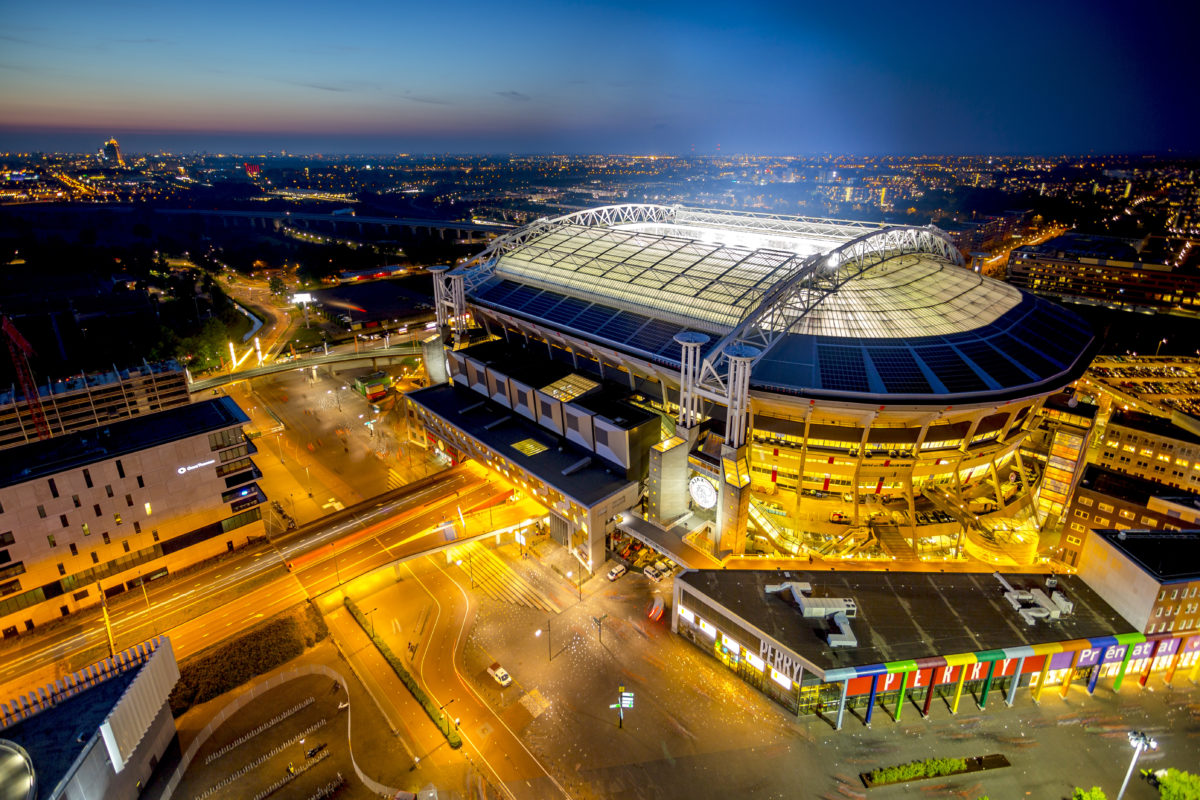Global power management specialist, Eaton and Germany-based The Mobility House were commissioned to build the 3 MW energy storage system at the Johan Cruijff ArenA, which employed a mixture of both second-life and new electric vehicle (EV) batteries from Japanese car manufacturer, Nissan.
The 2.8 MWh storage system comprises 590 Eaton energy storage battery packs, of which 250 are second life, and 340, first life. A total of 61 battery racks have been installed across seven rows, in addition to four bi-directional Eaton inverters. The system has been designed to complement the diesel generators, which currently provide the stadium’s backup power. They will fully replace them in the future, once the regulation framework is in place.
pv magazine spoke to three of the parties involved in the project about their participation, the challenges they faced, and what is next in the cards. First up is U.S.-founded Eaton, which supported the project with its power management expertise. Frank Campbell, President, Corporate and Electrical, Eaton EMEA discusses his experiences below, and how such systems can be monetized on a much larger scale.

Eaton
pv magazine: What was Eaton’s involvement in this unique project?
Frank Campbell: Eaton designed the energy storage system specifically to meet the requirements and use cases of the Johan Cruijff ArenA and The Mobility House. This included designing and adapting our own power electronics, such as the bi-directional inverters, as well as integrating the Nissan battery modules (second life and new ones) into the energy management system. Eaton also took care of the certification and compliance to relevant standards of the energy storage system. Finally, we ensured that the energy storage system is not only sustainable but also safe and reliable.
What challenges did you face?
Everyone knew this was an innovation project, and that such projects are known to be fraught with certain issues. But I think we all approached the exercise in a spirit of cooperation, aware that we were trying to create something new and unique.
We’d never integrated a Nissan battery module into our energy storage systems until we started our partnership back in 2015. The technical challenge was not particularly difficult given the expertise shared between both companies. At its core, the system is close to a UPS (uninterruptible power supply) system, with new firmware, software and capabilities built into it. The core building blocks were already there; the real challenge was to create the application capabilities required for such an installation. We’re used to working with lead acid batteries, so working with lithium-ion batteries did require some capabilities that we were unfamiliar with. We therefore recruited and partnered with smart people that had that capability.
The other key element was to create an entrepreneurial team within Eaton – whenever these kinds of projects are put into the mainstream part of your business, they can sometimes become a nuisance and a distraction. So we created a completely separate business unit, reporting directly to me. This was important as it gave it the visibility, funding and organizational “protection” that it needed.
It was also important to build a team of people who were passionate about the project, and were willing to work really hard to make it happen. Thankfully, we have just such a team on the project.
Why did you choose to work with Nissan?
This relationship goes back to an EU granted project called GreenDataNet, the aim of which was to make data centers more energy efficient and to ultimately reduce their environmental impact. Eaton managed the project, which was launched in 2014 and Nissan was a partner in the consortium. This is when our strategic working relationship started.
Nissan face a challenge regarding the circular economy and the second life of an EV battery. After a certain number of charge and discharge cycles, an EV battery can no longer be effectively used in EVs. But they’re perfectly suitable for an energy storage application. So we worked together on how to repackage those batteries into a storage application. The system you just saw looks almost like a data center hall, where there’s a UPS, and racks of servers. Instead of seeing stacks of servers using power, you saw stacks of storage packs using the exact same IT racks that provide power.

Nissan
Overall, we worked with Nissan as our battery supplier, both for second life and new batteries, on two fronts – on residential applications (which we have launched in the U.K., Germany, France, Italy and some other European countries), and on commercial & industrial applications. Obviously the economics of second life batteries are somewhat more advantageous.
Can you expand on the economics?
A second life battery has about 70% of the capacity of a new battery, so you would need about 30% more batteries to get to the same power rating as you would with new batteries. But in an application where you need a certain power rating, we can use second life batteries to reach that, and it works out around 20-25% cheaper. In addition, the batteries still have a 10 year warranty.
How much did the project cost?
We’re not disclosing that, however the payback period mentioned in the press conference was 10 years. I think it will be much less than that. The vehicle-to-grid capability is not being implemented right now, but it will be in the future to monetize the investment even more. The plan is to integrate this system into the neighborhood. There will be additional charging infrastructure outside the stadium, which will be connected to the energy storage system and work in conjunction with the grid.
Do you expect to work on similar projects in the future?
100% yes! What we have developed at the JCA is a clear demonstration of what the future could look like for stadiums and cities across Europe. Applying these ideas, technologies and services into other industries could also have a huge impact on being able to provide sustainable, resilient energy for everyone.
Stadiums are an interesting application – they hold 50,000-60,000 people for just a few hours a week, with high power demand over that period, while the rest of the time they are idle. However, because they have such a large capacity, there are very stringent power requirements. You need backup power, because if the grid goes down all these people will need to be safely evacuated somehow. Diesel gensets have been the backup power of choice for decades. Now there’s an alternative solution in battery storage – so you can now take this dirty, noisy, hard to run asset and turn it into something that can make money.
So what the ArenA is going to do, and what arenas can do all over the world, is to is monetize this backup generation source by trading energy on the regulation market, on the spot market, and help the local neighborhood with backup power, which they can charge for.
What about buildings like hospitals, which have a constant high power demand? Is there a business case for these too?
In this stadium, there is enough battery storage here to run the stadium at full power, full load, with full capacity of 50,000 people, and all the kitchens running, for one hour. That’s significant. In this country, a one hour power failure probably hasn’t happened for 30 years, so they have enough backup power to run this place full tilt for one hour. If there was a power crisis, there are strategies that can be put in place to shed load here, and we could probably run the stadium for four hours. A hospital application is very similar, so we can run a hospital too.
But can a hospital monetize such a system?
Sure. There’s a new technology, a new energy service, called UPS-as-a Reserve, which basically says if you have a battery storage system, why just have it sit there for the sake of battery backup. We’ve written firmware and software inside of our UPS technology to allow the storage to be used in addition to providing backup power. At the same time, it can actually be a source that can feed back into the grid. The application was created in Helsinki, Finland, where the team invented the dual purpose capability of batteries: back up power and as a monetization asset.
When will it be available?
This new energy service was launched at the end of last year. And we’ve recently announced the first pilot project with Svenska kraftnät, a Swedish electricity transmission system operator. We see lots of interest in other European countries for this new solution.
What is the market potential?
It could be very significant. Not only for hospitals, but there are bigger opportunities with data centers. Data centers are an even better application for such a system. The backup power required at data centers – particularly on a hyper scale – is minimal, because they only really need power long enough to do an orderly shutdown of the servers and an orderly virtualization of the servers somewhere else.
So if we give one of these hyper scale guys enough time to transfer their servers from where they were to another place, they’re quite happy. By the way, the really cool thing is that all existing data centers can be retrofitted, so you’ve got all these power sources sitting there with lead acid batteries, or lithium- ion batteries (which are going to become the technology of the future in data centers), and the data center operators can use this new software capability to provide themselves with enough backup power , which they can set for certain amounts of times, say 10 or 20 minutes. Depending on what the setting is, we can then dispatch the rest into the monetization market.
Basically this UPS-as-a-Reserve enables operators to earn from their investments in UPS, while helping energy providers balance sustainable energy demands. So data centre operators have an opportunity to work with energy providers to momentarily reduce the power demands of the data centre and even return power to the grid.
This content is protected by copyright and may not be reused. If you want to cooperate with us and would like to reuse some of our content, please contact: editors@pv-magazine.com.




By submitting this form you agree to pv magazine using your data for the purposes of publishing your comment.
Your personal data will only be disclosed or otherwise transmitted to third parties for the purposes of spam filtering or if this is necessary for technical maintenance of the website. Any other transfer to third parties will not take place unless this is justified on the basis of applicable data protection regulations or if pv magazine is legally obliged to do so.
You may revoke this consent at any time with effect for the future, in which case your personal data will be deleted immediately. Otherwise, your data will be deleted if pv magazine has processed your request or the purpose of data storage is fulfilled.
Further information on data privacy can be found in our Data Protection Policy.